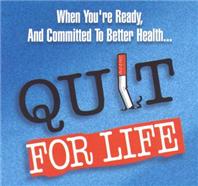Imagine three jumbo jets filled to capacity crashing in the United States every single day
365 days a year, killing everyone on board. Horrific to think about, but this example represents the number of precious lives lost to tobacco day in and day out in the United States alone. Unfortunately, cigarette smoking still tops the list as the most preventable cause of death in the United States today, accounting for 438,000 deaths annually. Estimates from the Centers for Disease Control for 2007 tell us that 20.8% of the U.S. adult population, or 45.3 million people, currently smoke cigarettes.
The nicotine in inhaled tobacco smoke moves from the lungs, into the bloodstream and up to the smoker's brain within 7 to 10 seconds. Once there, nicotine triggers a number of chemical reactions that create temporary feelings of pleasure for the smoker, but these sensations are short-lived, subsiding within minutes. As the nicotine level drops in the blood, smokers feel edgy and agitated -- the start of nicotine withdrawal. So, in order to relieve the discomforts, smokers light up another cigarette...and then another..and another. And so it goes -- the vicious cycle of nicotine addiction. One cigarette is never enough, a fact that every smoker knows all too well.
In order to quit smoking successfully for the long term, it helps to understand the nature of nicotine addiction and what it takes to break free of it. In fact, smokers are often surprised to learn that they are addicted to a substance. Many of us believed that smoking was just a bad habit; something we could stop easily when we decided it was time.
Let's take a look at how nicotine affects brain chemistry and begin the educational process that will help us battle this addiction to the ground, once and for all.
When a person inhales cigarette smoke, the nicotine in the smoke is rapidly absorbed into the blood and starts affecting the brain within 10 seconds. The result is the release of adrenaline, the "fight or flight" hormone. Physically, adrenaline increases a person's heart rate, blood pressure and restricts blood flow to the heart muscle. When this occurs, the smoker experiences rapid, shallow breathing and the feeling of a racing heartbeat. Adrenaline also instructs the body to dump excess glucose into the bloodstream.
Nicotine and Insulin
Nicotine also inhibits the release of insulin from the pancreas, a hormone that is responsible for removing excess sugar from a person's blood. This leaves the smoker in a slightly hyperglycemic condition, meaning he has more sugar in his blood than is normal. High blood sugar acts as an appetite suppressant, which may be why smokers think their cigarettes reduce hunger.
Nicotine activates the same reward pathways in the brain that other drugs of abuse such as cocaine or amphetamines do, although to a lesser degree. Research has shown that nicotine increases the level of dopamine in the brain, a neurotransmitter that is responsible for feelings of pleasure and well-being. The acute effects of nicotine wear off within minutes, so people must continue dosing themselves frequently throughout the day to maintain the pleasurable effects of nicotine and to prevent withdrawal symptoms.
The Chemicals in Cigarettes
In addition to nicotine, cigarette smoke is composed of more than 4000 toxic chemicals and tar. The tar in a cigarette, which can be as much as 22 mg in a high-tar cigarette to 7 mg in a low-tar cigarette, exposes smokers to an increased risk of lung cancer, emphysema, and bronchial disorders.
The carbon monoxide in cigarette smoke increases the chance of cardiovascular diseases. The Environmental Protection Agency has concluded that secondhand smoke causes lung cancer in adults and greatly increases the risk of respiratory illnesses in children and sudden infant death
Statistics show that only a small percentage (approximately 7%) of people who try to quit smoking without support are still smoke-free a year later. However, those with a quit program in place that includes education about nicotine addiction and a solid support group, do much better
If you go into this website it is really interesting and full of facts.
quitsmoking.about.com/od/glossaryofterms/g/nicoreceptor.htm - Similar
